M F Husain
₹160,000
Title: Horse – II
Medium: Serigraph on Paper
Dimensions: 31 X 41 inches
1 in stock
Description
M F Husain’s serigraph is printed in 19 colours. Edition Size 125.Maqbool Fida Hussain, artist extraordinaire, a painter of cinema hoardings, was the architect of Contemporary Art movement in India. After a visit to the Indian Independence Exhibition in 1948, Husain and Souza were inspired to create a vibrant movement that took its clues from the greatness of Indian civilization and away from formulaic colonial displays of Indian scenes. They took up the challenge of setting aside both the British academic art and its clone the Bengal school. The Progressive Art Group that had its roots in Bombay was formed soon after Independence in 1947. Partition that divided India was a catalyst. Souza, Raza, Ara, Gade and Bakre were the founding members. The PAG through its artwork has been the most influential of art movements in India. Part of their manifesto was to “paint with absolute freedom for content and technique, almost anarchic, save that we are governed by one or two sound elemental and eternal laws, of aesthetic order, plastic co-ordination and colour composition.” On a visit to the holy city of Benares that Husain and Ram Kumar made in the early 60s, both came away captivated by the bathers, the boats and the architecture. Ram Kumar immersed himself in the ethos of the eternal city for the next 6 decades. Husain’s cache of drawings and paintings depicting the city, its living and its dead, glow with an inner light. The colours from M F Husain’s cinema hoardings were now reflected in the art created on canvas. Paintings of MF Husain continuously explored his roots. His knowledge of Indian mythology, religions, customs and traditions was unparalleled. MF Husain was not afraid to repaint the streets of Bombay, its people, and its markets all in a different light and form. Unlike Raza, he continued in his exploration of the human figure. He energized his figures. They flew through the skies, fell down to the earth, assumed proportions of the gods they depicted, horses in full gallop, people as vibrant as the forests of Kerala that they inhabited, proud people of Rajasthan from the land of valour, the abstract paintings of ‘the Raman Effect’, the humour whilst depicting the British Raj and all the imperial foibles and the series on Mother Teresa posing her as the Eternal Mother that he never had. What did M F Husain not paint? His car and the pavement under his feet were painted. Brush in hand, he painted everywhere he went. And he went everywhere upon a whim. Without informing close family, without carrying even a toothbrush. In 1967 his film ‘Through the eyes of a painter ‘won him the Berlin Golden Bear. His portrayal of Rajasthan, its colourfully decked people, stylized and faceted set in their earthy austere landscape won him critical press reviews and an adoring collector base. Chester Herwitz, his most ardent follower, built up a formidable collection of his work and was a fount of knowledge on all things Husain. In the 60s and 70’s Husain’s acclaim made him into an icon, a cult figure, known as much for his eccentricities like walking the streets of Bombay barefoot as for his art. At each point in time, when one tried to figure out ‘What would he do next? How much more would his painting go up in value?’ Husain seemed to be miles ahead of everyone, he not only single handedly create a market for himself for the entire artist community. The latter looked on him with admiration born out of respect and looked up to him for inspiration and constant validation. Trying to understand this incredible Indian artist is futile. He was ahead of his time for sure. Every human action or inaction was grist as subject matter. What stood him in good stead was the surety of his fractured line. His line never wavered. It was perfect each and every time. The figures were thus powerfully endowed. His sense of colour is unmatched. He was a master colourist whether he used earth tones or the most striking colours . He was the acclaimed muralist and at times painted directly on the wall to create wall paintings. His early stint as a painter of movie hoardings made him a genius of scale. No wall or canvas was too large as he effortlessly went about his creative pursuit. That did not mean that he didn’t paint on small canvases. His smaller watercolours on paper are crisp and pure. They define how far away he had made Indian Art move away from established British norms in that medium. He reveled in all mediums. His colours in his serigraphs are a delight. He pushed serigraphy to its limits with his overlapping colours and lines creating tones that were earlier considered impossible to achieve. His limited edition art prints are collectors’ items now and increase in value, as do his paintings. He was the first Indian artist to explore this medium, as he knew that his oil paintings done in the past and the acrylic on canvas paintings that he did in later decades would soon be unaffordable to most people. He wanted to create in a medium that could be considered as affordable art. Russi Modi sums it up perfectly when he said in his foreword on a book ‘Husain’ published by Tata Steel, “Over the years he (Husain) has become the symbol of everything that is beautiful, aesthetic sand soulful in our lives. His paintings are admired and possessed all over the world, and although he is considered a modern painter his painting has at all times been an embodiment of the Indian culture and environment.” This artwork will be shipped rolled with Crimson’s certificate of authenticity.


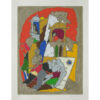










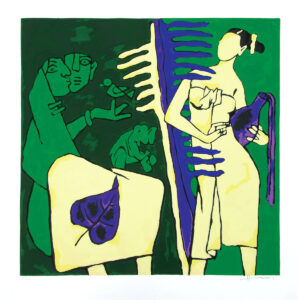
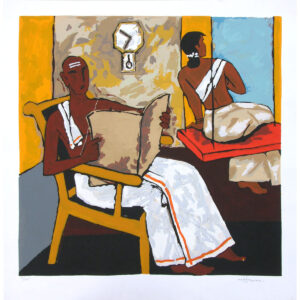












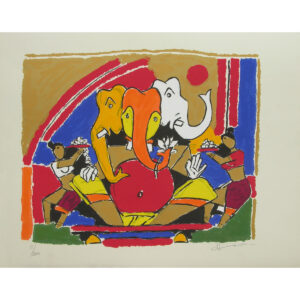











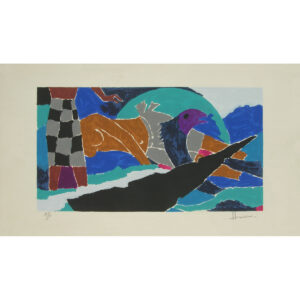
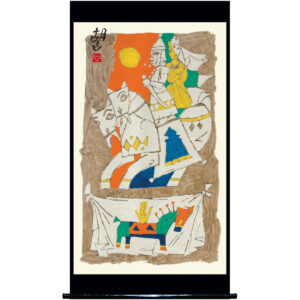











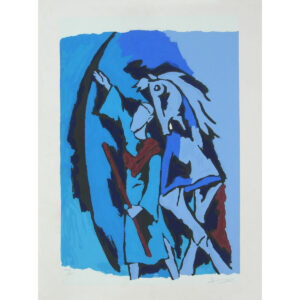

















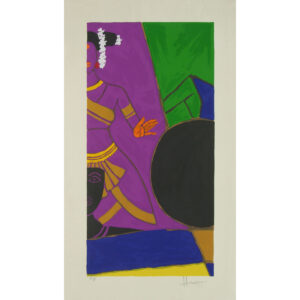












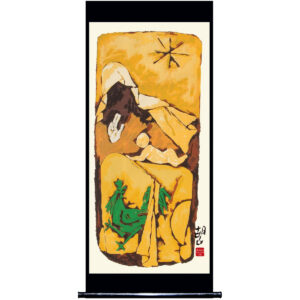
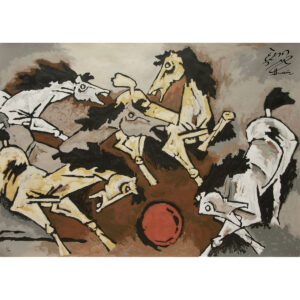







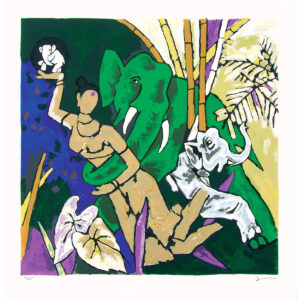






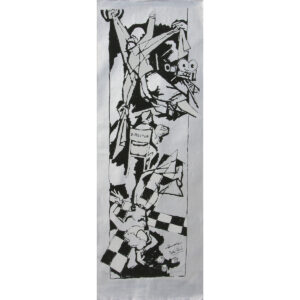


Reviews
There are no reviews yet.